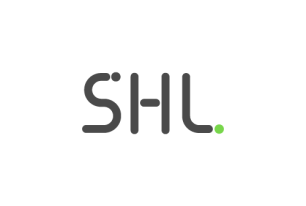Is Your HiPo Strategy Ready for the Next Economic Shakeup?
Distinguishing high potentials from high performers is vital to sustaining uncertainties. Learn what you need to consider in implementing a best-in-class HiPo strategy.
Share
Leaders have a lot to handle as they navigate the Great Resignation and looming economic uncertainty. Amidst major staff shakeups, there is an intensified focus on identifying and mobilizing leaders who can guide organizations through uncertain times. As a result, a growing number of HR and business leaders are seeking the latest methods to identify, place, and develop high potential leaders.
Employees are often deemed high potentials because of their current strong performance and desire to take on a higher-level role. But as the saying goes, what got you here will not get you there: the qualities that make someone great today do not always translate to success at the next level. Further, high potential identification often lacks objective data and measurement against evidence-backed competencies known to predict future success. This decreases the predictive power and introduces bias into high potential identification processes.
So how are best-in-class organizations identifying high potential leaders who will sustain success amidst change and uncertainty?
The qualities that make someone great today do not always translate to success at the next level.
Measuring the right predictors of high potential
The past few years have uniquely highlighted the leadership qualities required to maintain stability during times of uncertainty and crisis. As such, consider the role of each of these competencies that truly differentiate high potentials from high performers:
- Resilience: The ability to push through difficult situations with a clear mind, bounce back after failure, and overcome challenges is crucial for leadership in times of uncertainty.
- Empathy: The ability to understand others’ feelings and show empathy during a crisis has been rated as one of the most important leadership qualities by experts around the world.
- Communication: This includes sharing information broadly, creating streamlined channels of communication, keeping the message simple, communicating frequently, and reinforcing and repeating information through multiple outlets and sources. This is increasingly important in today’s virtual world of work.
- Candor: As Brene Brown preaches, clear is kind. Leaders must be able to speak with transparency and clarity. Speaking the truth, even when the answer is difficult, is an important tool for building trust-based cultures.
- Humility/ vulnerability: People who demonstrate humility and vulnerability build trust faster than others. Humble leaders check their egos, admit mistakes, and learn from others. Vulnerable leaders have the added ability to leave themselves open to receiving critical feedback, keep an open mind, and resist becoming defensive.
- Active listening: Leaders often feel pressure to have answers. However, especially in times of uncertainty, the best insights and decisions are reached through listening. Three vital questions high potential leaders ask themselves include:
Does this need to be said?
Does this need to be said by me?
Does this need to be said right now?
Best-in-class high potential programs focus on measuring leaders against an objective and predictive set of competencies to identify high potentials. Those that use a structured and predictive set of measures are most likely to engage their workforce and promote leaders who will succeed during times of uncertainty and crisis.
To learn more about how to implement a best-in-class HiPo strategy, contact us today!









